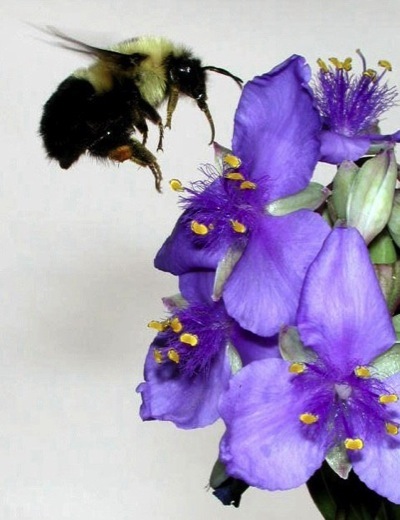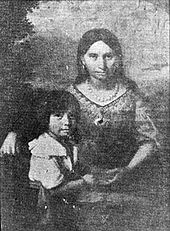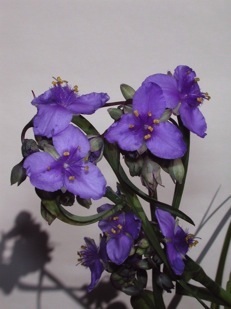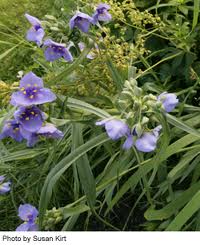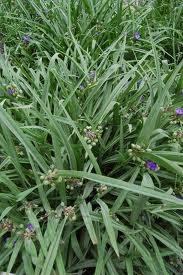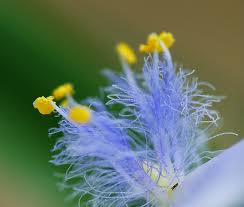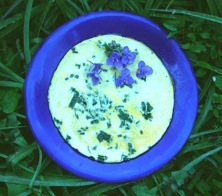There are 412 years, as of Dec 20th, 2017, between the sailing of John Smith to the New World and spiderwort gamma rays, but they are connected including Pocahontas.
Smith was a colorful character. He went to sea at 16, was a mercenary, fought against the Turks, was wounded, enslaved by them, escaped, killed three Turkish commanders in separate duals, was knighted by a Transylvanian prince, and by December 1606 at the age of 26 was sailing to America. It was not a smooth voyage. The ship’s captain had planned to execute Smith on arrival for his bad behavior during the trip. But, when they arrived they opened sealed papers from the Virginia company: The man who was to be hanged was put in charge. Now that’s a reprieve.
Life was rough for the Jamestown Colony. Food was scarce. Sailors were reluctant to farm, which prompted now Captain Smith to make one of his more famous pronouncements: He who doesn’t work doesn’t eat. That got the weeds pulled. Smith’s dealings with the natives — where he met “Pocahontas” actually named Matoaka — were as strained. They were the only grocery within thousands of miles and he didn’t always pay. Indeed at one point Smith was to be execute for bad credit. It’s a good thing he wasn’t killed because Smith had other tasks, besides evading executions, and that was to collect seeds for his friend, John Tradescant, the elder.
Tradescant, a decade older than Smith, had fought here and there as well but he was also always picking up seeds and items of interest. He was truly the first naturalist of record. Because of that, Tradescant began gardening for various nobles and in time was the gardener to Charles I, a position his son John, equally as talented and famous, would also hold. The elder Tradescent introduced many plants into England including Cos Lettuce from the Greek isle of Kos, birthplace of Hippocrates. Think of that the next time you have some Cos lettuce, or Romaine as it is called in America.
Smith was able to return to England with seeds of what is commonly now know as the Spiderwort, which is still popular in English gardens. When plants were being named, the Spiderwort, because of its association with the Tradescant family, was given the Latin name Tradescantia virginiana (tra-dess-CAN-tee-ah vir-jin-nee-AY-nah (In the plant world, Virginiana means North America.) The Tradescantia is in the greater family of Commelinaceae, worthy of a separate article some day.
Why the Spiderwort is called that is in dispute. Wort is Old English for plant, so that part is not in contention. There are four reasons given for the “spider” part. 1) The viscous sap will pull out like a spider thread when a leaf or stem is broken. 2) The clusters of blossoms look like spiders hanging from a web. 3) The plant is leggy and in toto looks like a really huge spider on your lawn. (And my favorite, 4) dew on the plants stamen hairs look like drops of dew on a cobweb.
The Spiderwort is sometime called a Day Flower, as is its cousin the much smaller Commelina, which is also edible, Flowers on both stay open only one day. The Spiderwort has numerous family members, perhaps two dozen in the United States, many if not most of them edible. Check with your local expert because a couple of crawling siblings definitely are not edible and can also cause dermatitis — especially non-green and stripped varieties, Tradescantia pallida comes to mind. Most common edible on my postage stamp lawn is the Tradescantia ohiensis, though the truth is the species are harder to tell apart than twins in the dark. Here in Florida, the
height of its season is late in the spring but it also blossoms nearly all year, and more importantly, as it ages it does not grow rank. Its leaves do not change in flavor as the plant ages. The leaves are good for salads as well, or in soup and stews but they are mucilaginous. The stems can be braised like asparagus. Spiderwort remains a popular edible because they are one of the few salad greens that can take Florida’s summer heat. The flowers, at one time favorites for candying, make very pretty blue additions to back yard salads. There are white and rose blossoms, too, but they are too rare to eat. Also, Tradescantia fluminensis, which looks like a Commelina with a white flower is edible, too.
Oh, and the gamma rays… The cells of the stamen hairs of some Tradescantia — the wispy hairs that look webesque when moist with dew — are “bioassays for ambient radiation levels.” Or said another way: The hairs are blue. When exposed to gamma radiation they turn pink. So if you think you’ve been near a nuclear explosion, just check your nearest Tradescantia.
To read about dayflowers, Commelinas, click here.
Green Deane’s “Itemized” Plant Profile
IDENTIFICATION: Clumpy perennial to two feet tall, violet-blue to purple, three-petaled flowers with contrasting yellow stamens, open up a few at a time for only one day, numerous flower buds. Flowers bloom year round in Florida, late May to early July in northern climes.
TIME OF YEAR: Leaves and flowers year round in Florida, leaves all but winter up north, flowers spring and early summer.
ENVIRONMENT: Grows in average, medium moisture, well-drained moist acidic soil, full sun to full shade. Tolerates poor soils. Lawns, roadsides, moist waste areas
METHOD OF PREPARATION: Leaves raw in salads —green tasting — leaves cooked in soups, stews, omelets, Spiderwort stalks cook well like asparagus. Flowers in salads, or candied. Doesn’t grow rank as season progresses. Sap used on skin conditions.

